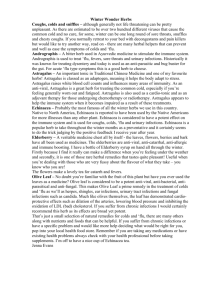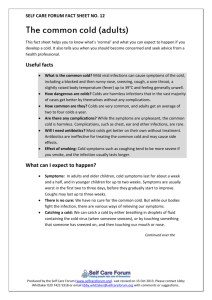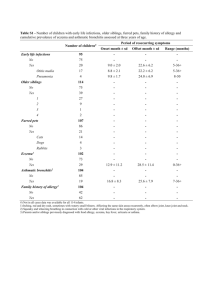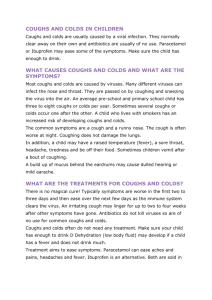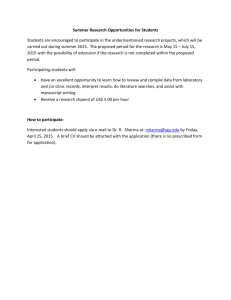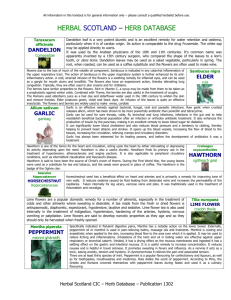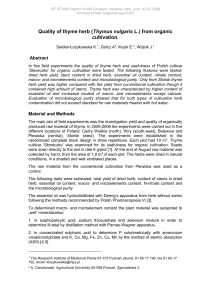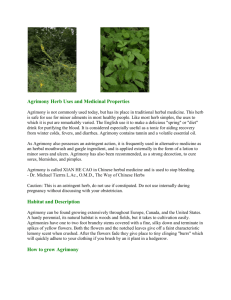Useful Indigenous Plants
advertisement
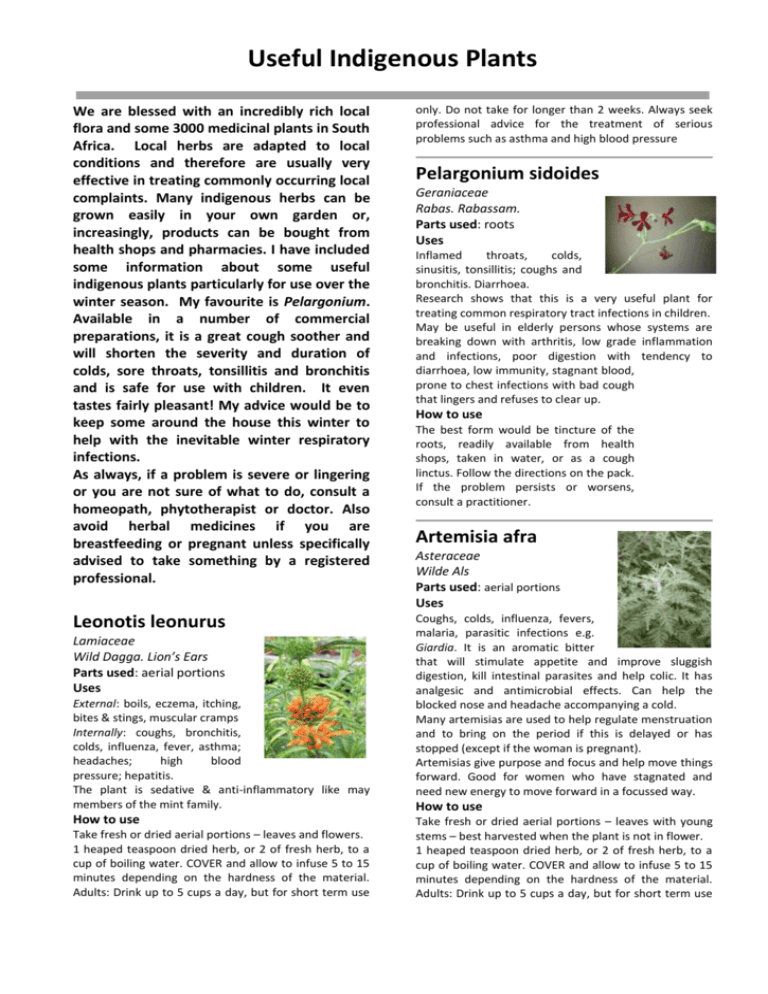
Useful Indigenous Plants We are blessed with an incredibly rich local flora and some 3000 medicinal plants in South Africa. Local herbs are adapted to local conditions and therefore are usually very effective in treating commonly occurring local complaints. Many indigenous herbs can be grown easily in your own garden or, increasingly, products can be bought from health shops and pharmacies. I have included some information about some useful indigenous plants particularly for use over the winter season. My favourite is Pelargonium. Available in a number of commercial preparations, it is a great cough soother and will shorten the severity and duration of colds, sore throats, tonsillitis and bronchitis and is safe for use with children. It even tastes fairly pleasant! My advice would be to keep some around the house this winter to help with the inevitable winter respiratory infections. As always, if a problem is severe or lingering or you are not sure of what to do, consult a homeopath, phytotherapist or doctor. Also avoid herbal medicines if you are breastfeeding or pregnant unless specifically advised to take something by a registered professional. only. Do not take for longer than 2 weeks. Always seek professional advice for the treatment of serious problems such as asthma and high blood pressure Leonotis leonurus Coughs, colds, influenza, fevers, malaria, parasitic infections e.g. Giardia. It is an aromatic bitter that will stimulate appetite and improve sluggish digestion, kill intestinal parasites and help colic. It has analgesic and antimicrobial effects. Can help the blocked nose and headache accompanying a cold. Many artemisias are used to help regulate menstruation and to bring on the period if this is delayed or has stopped (except if the woman is pregnant). Artemisias give purpose and focus and help move things forward. Good for women who have stagnated and need new energy to move forward in a focussed way. Lamiaceae Wild Dagga. Lion’s Ears Parts used: aerial portions Uses External: boils, eczema, itching, bites & stings, muscular cramps Internally: coughs, bronchitis, colds, influenza, fever, asthma; headaches; high blood pressure; hepatitis. The plant is sedative & anti-inflammatory like may members of the mint family. How to use Take fresh or dried aerial portions – leaves and flowers. 1 heaped teaspoon dried herb, or 2 of fresh herb, to a cup of boiling water. COVER and allow to infuse 5 to 15 minutes depending on the hardness of the material. Adults: Drink up to 5 cups a day, but for short term use Pelargonium sidoides Geraniaceae Rabas. Rabassam. Parts used: roots Uses Inflamed throats, colds, sinusitis, tonsillitis; coughs and bronchitis. Diarrhoea. Research shows that this is a very useful plant for treating common respiratory tract infections in children. May be useful in elderly persons whose systems are breaking down with arthritis, low grade inflammation and infections, poor digestion with tendency to diarrhoea, low immunity, stagnant blood, prone to chest infections with bad cough that lingers and refuses to clear up. How to use The best form would be tincture of the roots, readily available from health shops, taken in water, or as a cough linctus. Follow the directions on the pack. If the problem persists or worsens, consult a practitioner. Artemisia afra Asteraceae Wilde Als Parts used: aerial portions Uses How to use Take fresh or dried aerial portions – leaves with young stems – best harvested when the plant is not in flower. 1 heaped teaspoon dried herb, or 2 of fresh herb, to a cup of boiling water. COVER and allow to infuse 5 to 15 minutes depending on the hardness of the material. Adults: Drink up to 5 cups a day, but for short term use Useful Indigenous Plants only. Do not take for longer than 1 week. Avoid in pregnancy. May also be obtained in tincture form. Dosage recommendations on the pack should be followed. Aloe & Bulbine species Asphodelaceae Parts used: leaves / leaf juice Uses Apply leaf juice to burns and scalds, sunburn, bites, stings, rashes, eczema, psoriasis. It is cooling and soothing and helps with healing. Can also be applied to minor cuts and grazes to promote healing. How to use For external use only. Internal use should be avoided unless under supervision as these plants have substances called anthraquinones which act as rather drastic purgatives. Pick a leaf and squeeze juice directly onto affected area, frequently. For aloe leaves, split the leaves lengthwise, then clear juicy material from the centre may be scraped off. Leaves of any species can be put in a blender, then strained through clean cheesecloth and frozen in cubes for future use of blended with a neutral base cream (e.g. aqueous cream) and kept in the refrigerator. If doing this, add a few drops of Tea Tree essential oil to help preserve it but, even then, this cream will have a limited storage life. Discard if there is any mould or bacterial growth or if it smells bad or rancid.
